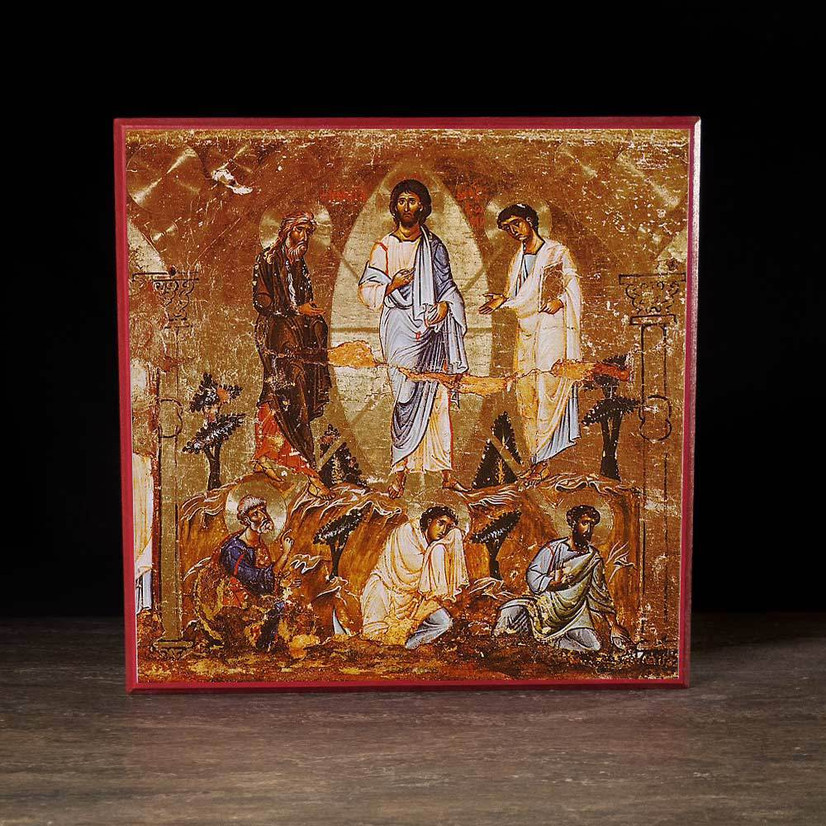The Transfiguration of the Lord
This past weekend, we celebrated the Feast of the Transfiguration of the Lord. In this post Sam Granger looks at how the Transfiguration "sheds some light" on the Orthodox, on iconography, and on our understanding of Christ.
The Feast of the Transfiugration is a big deal for Orthodox Christians, because it's the feast dedicated to Christ's glory. The name "orthodox" comes from two Greek roots: orthos (ὀρθός) meaning "right" or "correct" and doxa (δόξα) meaning "glory." Orthodox Christians are concerned with "rightly glorify" God through all their actions, whether liturgical or mundane. Ornate architecture, melodious chanting, the lives of holy men and women—all of this beauty strives to shine forth the glory of God for all to see.

Come, you faithful, let us welcome the Transfiguration of Christ,
And let us joyfully cry as we celebrate the prefeast:
"The day of holy gladness has come;
The Lord has ascended Mount Tabor
To radiate the beauty of His divinity."
—Troparion of the Forefeast
The Transfiguration should also be a big deal for anyone interested in iconography. The background of most icons is a radiant gold. This precious metal magnifies the light around it and catches the eye of the viewer. No matter the scene depicted, the gold leaf always echoes the light of Tabor, the light of Christ. In the Transfiguration we see that Christ is "light of light, very God of very God," as proclaimed in the creed. The light within an icon reflects the luminous presence of Christ and the Spirit as they come down from "the Father of lights" (James 1:17) to transfigure everything in the scene.
Finally, the Transfiguration is essential for anyone who wants to know who Christ truly is. Western churches tend to say you cannot understand Christ without understanding the Cross: crucifixes are ever present in Catholic aesthetics, and the "cruciformity" of most Protestant theology focuses on the atoning death of Christ. While all of this is right, Eastern Christians would still say that even the Cross can misunderstood—unless it's cast in the right light.
On the Mountain You were Transfigured, O Christ God,
And Your disciples beheld Your glory as far as they could see it;
So that when they would behold You Crucified,
They would understand that Your suffering was voluntary,
And would proclaim to the world,
That You are truly the Radiance of the Father!
—Troparion of the Feast
In Greek we literally call this feast the "Metamorphosis of the Lord" (Μεταμόρφωσις τοῦ Κυρίου). A metamorphosis brings about drastic and profound changes. In this case, the Lord's revelation of his divinity fundamental changes how his disciples understand him. The word "doxa" not only means "glory" but also "opinion." (Like when a "paradox" forces you to uphold two contrary opinions.) By showing the apostles his glory, Christ also clarified what opinion they should have of him. Christ "enlightens" his apostles with the knowledge of who he truly is, so that the darkness of his future suffering will not eclipse their eyes to the light of his divinity.
If the Incarnation is the story of Christ who is "in the form of God" (morphē tou theou) being "deformed" into the "form of a slave" (morphē doulou), then the Transfiguration is the story of the "form of God" being "reformed" and now made visible insofar as the apostles can look upon him. This revelation strengthens and corrects (ὀρθός) the apostles vision, since one's bear the sight of the Lord helps one to bear his own cross.
The Transfiguration shows us the goal of Christ's life, death, resurrection, and ascension. This vision of the transfigured life and the glorified body of our Lord comes to us at the end of the liturgical calendar to remind us what God intends for us. Christ offers us in this scene a glimpse of his glory which can transfigure all the malformed confusion and suffering in our lives. This feast encourages us by reminding us that we all, "with unveiled faces, beholding as in a mirror the glory of the Lord, are being transformed (μεταμορφούμεθα) into the same image from glory to glory" (2 Cor 3:18).


